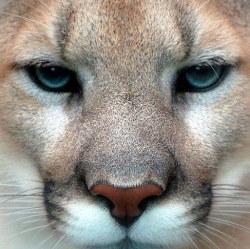
By comparing DNA sequences, the team revealed that two populations of tigrina in Brazil do not interbreed and are evolutionarily distinct.
Results also show the two populations have contrasting interactions with the closely related pampas cat and Geoffroy’s cat.
The findings are published in the journal Current Biology.
There are at least seven species of small wild cat in the genus Leopardus in Central and South America, which are thought to have first colonised the region during the late Pliocene (2.5 – 3.5 million years ago).
A team of researchers led by Dr Eduardo Eizirik from the Pontifical Catholic University of Rio Grande do Sul, Porto Alegre, Brazil collected samples of DNA from pampas cats (Leopardus colocolo) in the north of the country, Geoffroy’s cats (L. geoffroyi) from the south and two separate populations – north eastern and southern – of tigrina (L. tigrinus).
"We used several different types of molecular markers to investigate the evolutionary history of these species," explained Dr Eizirik.
"These [molecular markers] evolve at different rates, which helps in the sense that they provide information on different time frames," he said.
By comparing these different chromosomal and mitochondrial DNA marker sequences the scientists could track patterns of interbreeding – or hybridisation – between the cat species and populations.
The markers revealed that the southern population of tigrina were actively breeding with Geoffroy’s cat in areas where the two species came into contact. In contrast, they found evidence for ancient hybridisation between the north eastern tigrina and the pampas cat.
